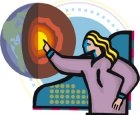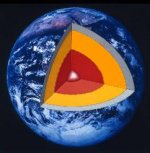
Worksheets and No Prep Teaching Resources
Reading Comprehension Worksheets
Earth Science

Earth Science
 Worksheets and No Prep Teaching Resources Reading Comprehension Worksheets Earth Science |
 Earth Science |
| edHelper's suggested reading level: | grades 8 to 9 | |
| Flesch-Kincaid grade level: | 8.37 |
| Print Just the Earth Facts! (font options, pick words for additional puzzles, and more) |
| Quickly print reading comprehension |
| Print a proofreading activity |
|
Just the Earth Facts!
By Trista L. Pollard |

|
 1
1 | Name: Planet Earth Birth Date: a very, very, very, long time ago Vitals: Only planet in our solar system that has liquid water on surface, an atmosphere with mostly oxygen, and supports life... |
 |
Create Weekly Reading Books
Prepare for an entire week at once! |
| Leave your feedback on Just the Earth Facts! (use this link if you found an error in the story) |
 |
Earth Science
|
 |
High School Reading Comprehensions and High School Reading Lessons
|